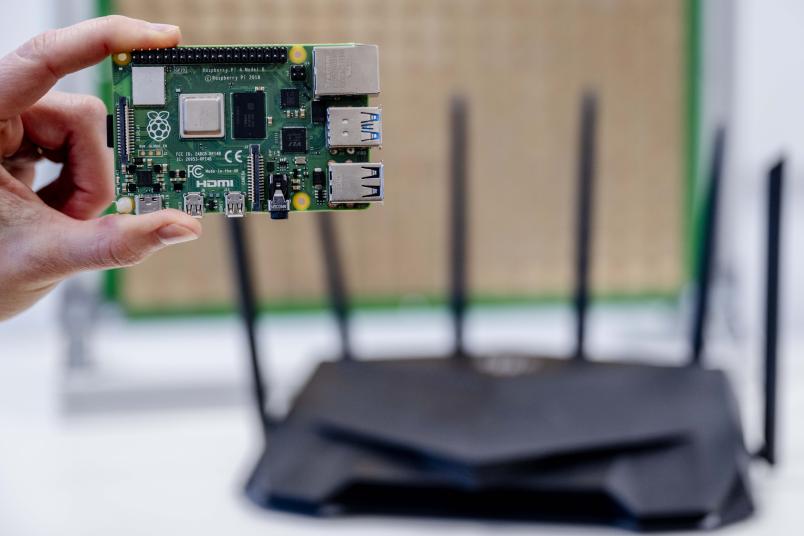Cybercriminals' doorway
Researchers reveal new method of attacking Wi-Fi networks
Wireless communication (WiFi) has become an indispensable part of the modern digital infrastructure, from homes to hotels and public institutions. However, security remains a critical issue.
Wireless systems are a valuable target for cyber criminals. By manipulating radio signals, they can illegally unlock doors in smart homes or prevent car doors from locking. Of particular concern are jamming attacks, where jamming signals overwhelm legitimate communications, effectively denying users service. In their recent paper "Spatial-Domain Wireless Jamming with Reconfigurable Intelligent Surfaces", co-authors Philipp Mackensen (Ruhr University Bochum) and Dr. Paul Staat (Max Planck Institute for Security and Privacy) and their team experimented with reconfigurable intelligent surfaces (RIS) and demonstrated how attackers may refine jamming attacks, increasing the security threat to users. Previously, jamming attacks were relatively easy to carry out but came with significant drawbacks, as unintended interference often disrupted neighboring devices. RIS technology mitigates this by allowing precise targeting of jamming signals, minimizing disruption to surrounding devices. They will present their work at the prestigious Network & Distributed System Security (NDSS) Symposium in San Diego, USA, on 25 February.
Software-controlled surfaces
RIS are software-controlled surfaces, derived from metamaterial research, that can dynamically guide radio wave propagation. Their unique capabilities position RIS technology as a promising innovation for future 6G mobile networks. The prototype used in this study was developed by scientists from TH Köln and Ruhr-Universität Bochum.
The RUB and Max Planck Institute for Security and Privacy research team – Philipp Mackensen, Stefan Roth, Prof. Dr. Aydin Sezgin and Prof. Dr. Valeesha Moonsamy (Ruhr University Bochum); Paul Staat and Prof. Dr. Christof Paar (Max Planck Institute for Security and Privacy) – used this technology to demonstrate selective jamming. "Imagine a RIS device as a disco ball reflecting radio waves – except that we can manipulate each individual facet to direct the waves exactly where we want them to go," explains Philipp Mackensen.
Selective jamming
Using their RIS system, the researchers were able to isolate interference to a single device, even when two devices were positioned just 5 mm apart. "Prior to this study, the jamming potential of RIS technology was largely unexplored," said Paul Staat. "Without RIS, it would have been impossible to achieve such high spatial resolution in an attack with relatively simple and inexpensive tools."
Possible mitigations
By understanding this attack scenario, the researchers were also able to identify possible mitigations to combat such attacks in the future.


